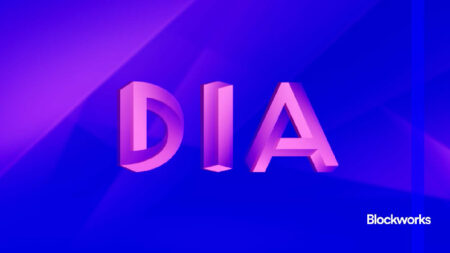Although many players in the blockchain industry prioritize maximizing throughput, Alex Mizrahi, co-founder of Chromaway, believes providing users with a transparent, secure, and decentralized computing environment is still equally important. So while blockchain projects aspire to satisfy the basic need to transact, Mizrahi emphasizes that establishing consensus among nodes should not be the sole goal.
Many Dapps Rely on Centralized Services
However, despite this being the stated objective of many blockchain projects, Alex Mizrahi, co-founder of Chromaway disclosed that numerous decentralized applications (dapps) actually “rely on centralized services to fetch, index, and verify data.” He also asserts that very few end users interact directly with blockchain nodes, as these nodes are not designed to serve data directly to users.
Mizrahi, who also co-founded Colored Coins, recommends revisiting how data flows into blockchain systems if projects aim to achieve the efficiency they espouse. Meanwhile, when asked about the mismatch between the government’s idea of privacy and the need for decentralization, Mizrahi said this mismatch and the resulting “tug of war” predates the blockchain and will always exist.
In other responses provided to Bitcoin.com News, Mizrahi also shared his views on the U.S. Securities and Exchange Commission’s approval of spot bitcoin exchange-traded funds and what this approval means for the crypto industry going forward. Additionally, he offered his perspective on Vitalik Buterin’s conclusion that synchronous atomic composability is overrated.
Below are Mizrahi’s answers to all the questions sent.
Bitcoin.com News (BCN): Ethereum’s co-founder Vitalik Buterin recently criticized the innovative “Synchronous Atomic Composability,” describing it as a highly overrated blockchain feature. His criticism triggered a debate, with some community members accusing the Ethereum co-founder of repeatedly criticizing blockchain innovations without justification. Do you support Buterin’s opinion that Synchronous Atomic Composability is overrated and unnecessary in the blockchain space?
Alex Mizrahi (AM): I would disagree with anyone who says that Vitalik said what he said “without justification.” I think his argument in this thread was well presented, and I agree with his central premise that the simplest and most user-friendly solution is often the best.
That being said, I think it’s always worth exploring new innovations and what they can bring to the table. It’s very possible that SAC may not be the best solution for every problem, but that doesn’t mean it’s not needed – there could be other applications.
BCN: Some users have accused Buterin of repeatedly going against legitimate fundamentals and tech progress. Perhaps some of Buterin’s critics consider his actions as deliberate attempts to eliminate competition for his Ethereum project. Do you see Buterin’s actions as those of someone concerned about the entire blockchain industry, or does he come across as one aiming to protect the interest of his primary project, Ethereum?
AM: I think it’s clear that Vitalik has the best interests of the industry and Ethereum at heart. If he didn’t care, he would probably be on a beach somewhere.
Anyone with a deep technical understanding knows that every new approach has pros, cons, trade-offs, et cetera. I would be more surprised if he expressed 100% support for any one particular innovation. If he thought it was the best approach, wouldn’t he already be contributing to it?
I think this give and take is all part of the marketplace ideas, and usually the best ideas and solutions will end up having the greatest impact.
BCN: Removing redundancy is an ideal way to improve the efficiency of blockchain protocols. This philosophy seems to align with Chromia’s as a Relational Blockchain. Could you briefly highlight why Chromia decided to pursue a solution in this direction?
AM: Layer-2s are created as a response to some bottleneck created by the Layer-1 design. For example, if transactions are getting too expensive, you make a Layer-2 that enables faster and cheaper transactions. If the chain is slow to index data, someone makes a Layer-2 that reads and indexes blockchain data.
When you build something from the ground up, it just makes sense that you try to avoid these issues in the first place. Chromia, and other novel Layer-1s, have the benefit of being able to see what has and hasn’t worked in the past. By fundamentally changing the way on-chain information is stored, Chromia provides automatically indexed data that is easy to query.
BCN: Like Buterin’s criticism of Synchronous Atomic Composability and how it could be easily substituted with existing solutions, do you consider some L2 solutions a redundancy in the blockchain industry?
AM: My main criticism of L2s is that most of them don’t offer anything new outside of faster and cheaper transactions. As an analogy, if Ethereum is a shopping cart, then many Ethereum L2s are just a shopping cart with a rocket strapped to it, or perhaps an organizer that helps you arrange things in the cart more effectively.
I find it more interesting when developers ask themselves “what if we built something that isn’t a shopping cart?”
BCN: Chromia is set to launch its relational blockchain network’s MVP mainnet soon. Could you explain to our readers what a relational blockchain platform is and what the MVP mainnet launch means for the wider crypto community?
AM: Relational databases are a time-tested technology that underpin the applications we use every day. They structure complex data sets in a way that makes it easy to read, write, and search. Chromia is a ‘relational blockchain’ because it combines these strengths with the permissionless nature of blockchain.
MVP mainnet launch establishes the foundation of the Chromia Network. It means that the wider crypto community will be able to deploy and use dapps on a platform with efficient data handling, instant block indexing and gas-free transactions for end users. We use the term ‘MVP’ because this launch is more like the basic skeleton. New features, upgrades, and ecosystem project launches will be coming later this year.
BCN: Data management is a persistent headache in the blockchain industry and is key to realizing blockchain efficiency. Achieving an efficient data management system would solve such problems as scalability and interoperability. How would you rate the industry’s achievement so far in that direction? Do you think there are still a lot of grounds to cover with how blockchains handle data, and what are your recommendations?
AM: The industry’s efforts have been focused on maximizing throughput, as measured in the number of transactions confirmed per second. While it’s important to satisfy the basic need to transact, we also need to remember that the purpose of blockchain is not only to establish consensus among nodes. The end goal, as I understand it, is to provide users with a transparent, secure, decentralized computing environment.
And, unfortunately, these aspects are often overlooked. For example, many of the so-called “decentralized applications” rely on centralized services to fetch, index, and verify data. Very few end users interact with blockchain nodes directly, as these nodes are simply not designed to serve data directly to users.
I recommend looking at the big picture: How does the data flow in the system as a whole? What would be the best for users and applications?
BCN: It’s worth noting that the core of blockchain regulation revolves around data management, considering heightened concerns over data privacy and security. Most times, the regulators’ idea of data privacy clashes with the blockchain’s philosophy of a decentralized ecosystem. Do you foresee a situation where there would be a balance between both sides of the divide, or do you see this tug-of-war between the government and the blockchain industry continuing?
AM: This is hard to answer definitively because different governments will take different stances on the issue. In the end, time will tell which approaches are successful.
Overall, there will always be a tug-of-war between the individual’s right to privacy and the efforts of corporations and governments to collect information. I would argue that blockchain is just a new medium for an age-old issue.
BCN: Developments in 2024, like the spot bitcoin and ethereum approvals, suggest the regulators may be coming around and abandoning their hardline stance on crypto. Some U.S. government critics allege this is happening because of the upcoming elections and as a political move to woo the voters. Do you think the U.S. government is genuine in its approach to blockchain and crypto regulation, and where do you see this trend going in the future?
AM: Adoption never happens in a straight line, but I think blockchain and crypto becoming a mainstream part of the world economy is inevitable. History shows that there will always be resistance to new ideas, especially ones that challenge long-established traditions and industries. I am actually surprised by how far things have progressed in a short period of time. If someone told me back in 2015 that there would be a Bitcoin ETF in less than ten years, I would have been skeptical. But here we are!
What are your thoughts on this interview? Share opinions in the comments section below.
Read the full article here









